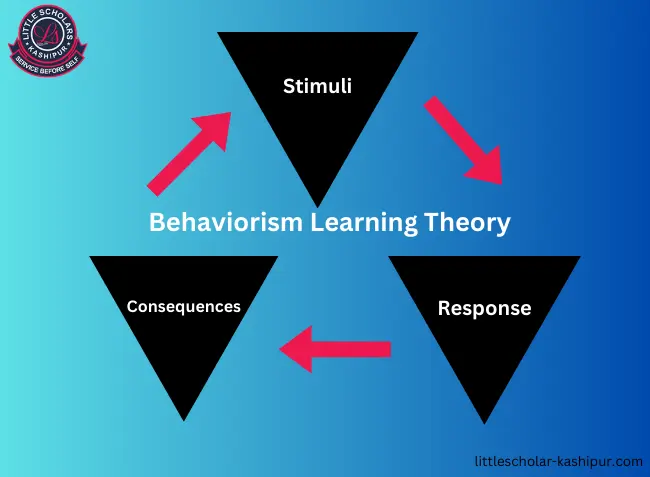Ever wondered how we learn and why we behave the way we do? Enter behaviorism, a learning theory that suggests all behaviors are acquired through conditioning. This theory has played a crucial role in shaping educational practices and psychological treatments. Let's dive into the fascinating world of behaviorism and explore its principles, applications, and impact on our lives.
History of Behaviorism
Early Foundations
Behaviorism's roots can be traced back to the early 20th century when psychologists started to focus on observable behaviors rather than introspection. This shift marked a significant turn in psychology, emphasizing the need for scientific rigor and empirical evidence.
Key Figures in Behaviorism
Pioneers like Ivan Pavlov, John B. Watson, and B.F. Skinner were instrumental in developing behaviorism. Their experiments and theories laid the groundwork for understanding how environmental stimuli influence behavior.
Principles of Behaviorism
Stimulus-Response Theory
At the core of behaviorism is the stimulus-response (S-R) theory, which posits that all behavior is a response to environmental stimuli. This concept underscores the predictability of behavior based on prior conditioning.
Reinforcement and Punishment
Reinforcement and punishment are crucial components of behaviorism. Positive reinforcement encourages behavior by providing rewards, while punishment aims to reduce undesirable behaviors by introducing adverse consequences.
Learning Outcomes: Discovering the Power of Education
Types of Behaviorism
Classical Conditioning
Classical conditioning, introduced by Ivan Pavlov, involves learning through association. Pavlov’s experiments with dogs demonstrated how a neutral stimulus (a bell) could elicit a conditioned response (salivation) when paired with an unconditioned stimulus (food).
Operant Conditioning
B.F. Skinner expanded on behaviorism with operant conditioning, which focuses on how consequences shape behavior. Through reinforcement and punishment, behavior can be modified and controlled.
Classical Conditioning
Definition and Explanation
Repetition of a pair of stimuli leads to a learning process called classical conditioning. When a previously neutral stimulus is linked to a stimulus that inherently elicits that response, the neutral stimulus begins to evoke a response.
Famous Experiments (Pavlov's Dogs)
Pavlov’s experiments involved ringing a bell before presenting food to dogs. Eventually, the dogs began to salivate at the sound of the bell alone, demonstrating learned behavior through association.
Applications in Learning
Classical conditioning is used in various educational settings to create positive learning environments. For example, teachers might use praise to condition students to engage in desired behaviors.
Operant Conditioning
Definition and Explanation
Operant conditioning is a learning approach that uses incentives and penalties for actions. It focuses on strengthening or weakening voluntary behaviors based on their consequences.
Skinner’s Experiments
B.F. Skinner’s work with rats and pigeons demonstrated how behavior could be shaped using reinforcement. His "Skinner box" experiments showed that animals could be trained to perform specific actions to receive rewards.
Applications in Learning
Operant conditioning is widely used in education to reinforce positive behaviors and discourage negative ones. Techniques such as token economies and behavior charts are common examples.
Key Theorists in Behaviorism
Ivan Pavlov
Pavlov's studies on classical conditioning established behaviorism as the theory. His experiments with dogs remain some of the most famous in psychology.
John B. Watson
Watson is often considered the father of behaviorism. He believed that psychology should focus on observable behavior and conducted experiments that emphasized the role of environmental factors in shaping behavior.
B.F. Skinner
Skinner’s contributions to operant conditioning have had a lasting impact on psychology and education. His work on reinforcement and punishment continues to influence behavioral therapy and educational practices.
Behaviorism in Education
Behaviorist Strategies in the Classroom
Behaviorist strategies involve using reinforcement to encourage desirable behaviors and reduce unwanted ones. Examples include reward systems, positive feedback, and structured routines.
Examples of Behaviorist Learning Activities
Activities such as drill and practice, flashcards, and repetitive exercises are grounded in behaviorist principles. These methods aim to reinforce learning through repetition and positive reinforcement.
Criticisms of Behaviorism
Limitations of the Theory
While behaviorism has been influential, it has faced criticism for its reductionist approach. Critics argue that it overlooks internal mental processes and the complexity of human behavior.
Alternative Theories of Learning
Cognitive psychology and constructivism offer alternative perspectives on learning. These theories emphasize the importance of mental processes, such as thinking, memory, and problem-solving.
Behaviorism vs. Cognitive Psychology
Differences Between the Two
Behaviorism focuses on observable behaviors and external stimuli, while cognitive psychology looks at internal mental processes. Both have their strengths and limitations in explaining how we learn.
Strengths and Weaknesses
Behaviorism’s strength lies in its scientific rigor and practical applications, but it can be too simplistic. Cognitive psychology offers a more comprehensive view of learning but can be harder to quantify.
Modern Applications of Behaviorism
Behavior Modification
Behavior modification techniques, rooted in behaviorism, are used to change maladaptive behaviors. These methods are commonly used in therapy and education to promote positive behavior changes.
Behavioral Therapy
Behavioral therapy applies behaviorist principles to treat various psychological disorders. Techniques such as systematic desensitization and exposure therapy are effective for conditions like anxiety and phobias.
Behaviorism in Everyday Life
Behaviorism and Habits
Behaviorist principles are often used to form and break habits. By understanding the triggers and rewards associated with behaviors, we can modify our actions to achieve desired outcomes.
Real-Life Examples
Examples of behaviorism in everyday life include training pets, implementing chore charts for children, and using reward systems to encourage healthy habits.
The Importance of Classroom Environment for Student Learning
Future of Behaviorism
Evolving Concepts
Behaviorism continues to evolve, incorporating insights from neuroscience and other fields. This interdisciplinary approach offers new avenues for research and application.
Potential for New Research
Emerging technologies and methodologies provide opportunities to explore behaviorism in novel ways. Future research may uncover deeper insights into the mechanisms of learning and behavior change.
Conclusion
Behaviorism has significantly shaped our understanding of learning and behavior. While it has its limitations, its practical applications and scientific basis make it a valuable theory in psychology and education. By exploring and applying behaviorist principles, we can better understand and influence behavior in various contexts.




